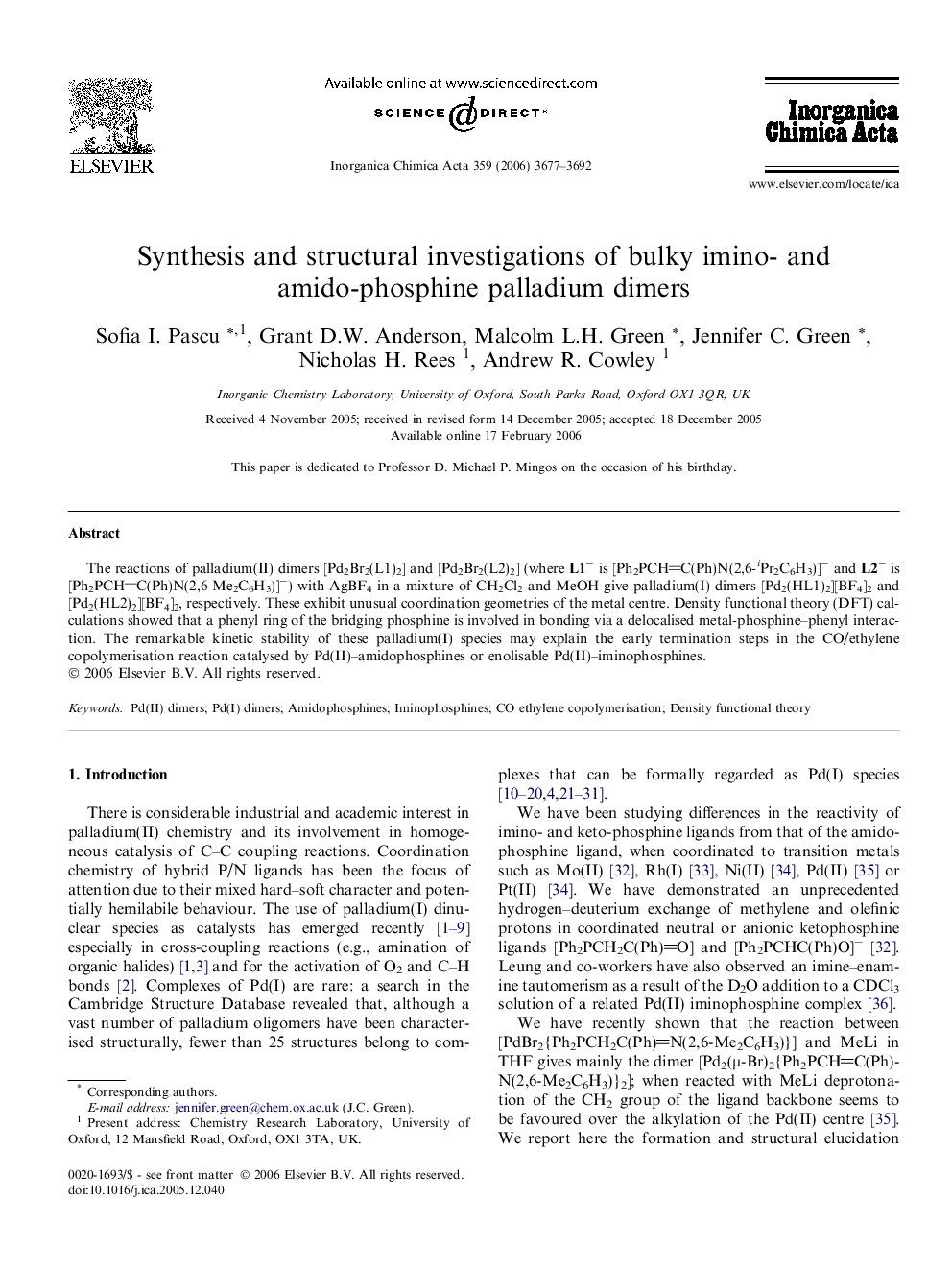| Article ID | Journal | Published Year | Pages | File Type |
|---|---|---|---|---|
| 1312976 | Inorganica Chimica Acta | 2006 | 16 Pages |
The reactions of palladium(II) dimers [Pd2Br2(L1)2] and [Pd2Br2(L2)2] (where L1− is [Ph2PCHC(Ph)N(2,6-iPr2C6H3)]− and L2− is [Ph2PCHC(Ph)N(2,6-Me2C6H3)]−) with AgBF4 in a mixture of CH2Cl2 and MeOH give palladium(I) dimers [Pd2(HL1)2][BF4]2 and [Pd2(HL2)2][BF4]2, respectively. These exhibit unusual coordination geometries of the metal centre. Density functional theory (DFT) calculations showed that a phenyl ring of the bridging phosphine is involved in bonding via a delocalised metal-phosphine–phenyl interaction. The remarkable kinetic stability of these palladium(I) species may explain the early termination steps in the CO/ethylene copolymerisation reaction catalysed by Pd(II)–amidophosphines or enolisable Pd(II)–iminophosphines.
Graphical abstractNew cationic Pd(I) dimers [Pd{Ph2PCH2C(Ph)N(2,6-R2C6H3)}]2[BF4]2 having remarkable kinetic stability have been prepared and investigated. They exhibit unusual coordination geometries of the metal centre. Density functional theory (DFT) calculations showed that a phenyl ring of the bridging phosphine is involved in bonding via a delocalised metal-phosphine–phenyl interaction.Figure optionsDownload full-size imageDownload as PowerPoint slide
